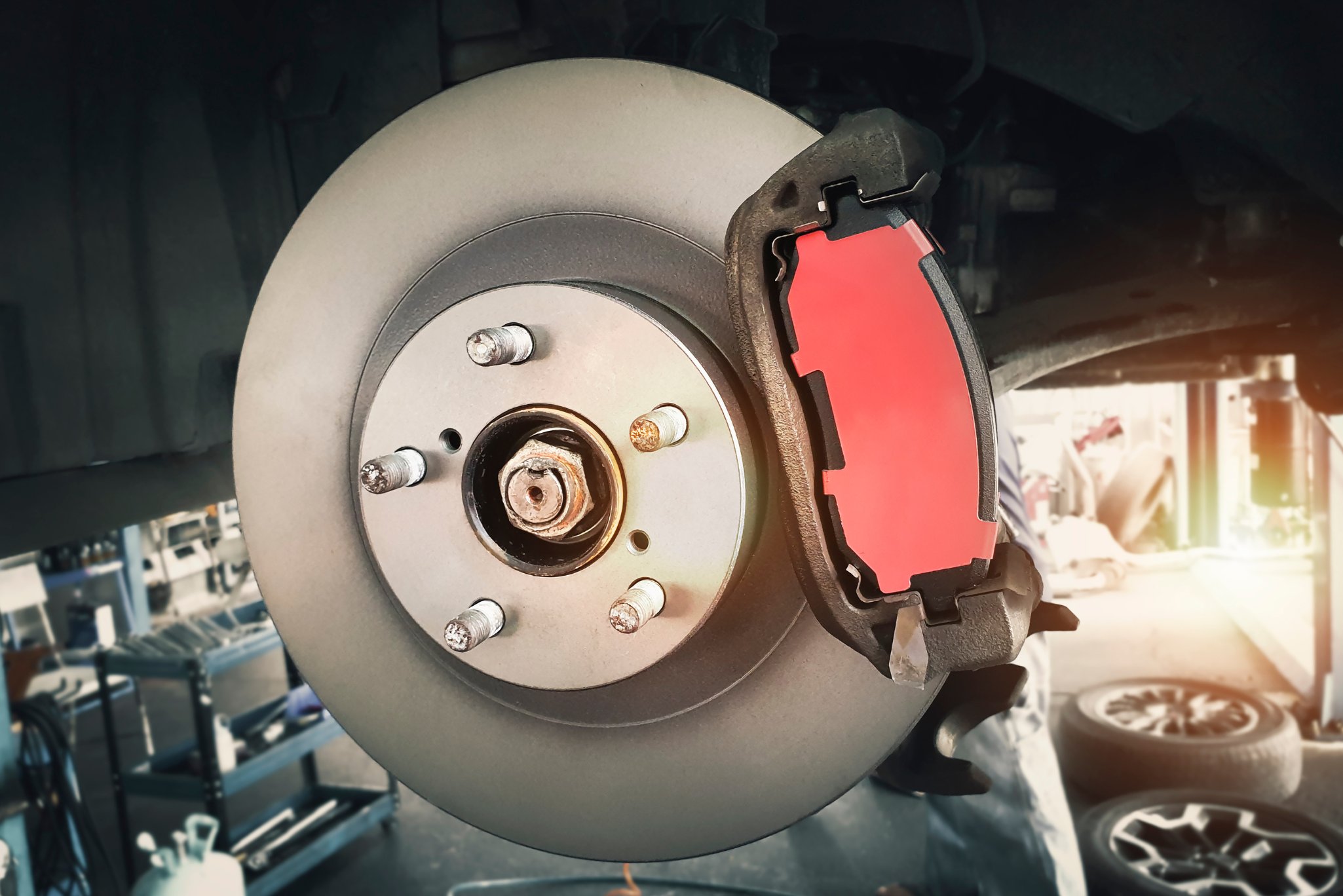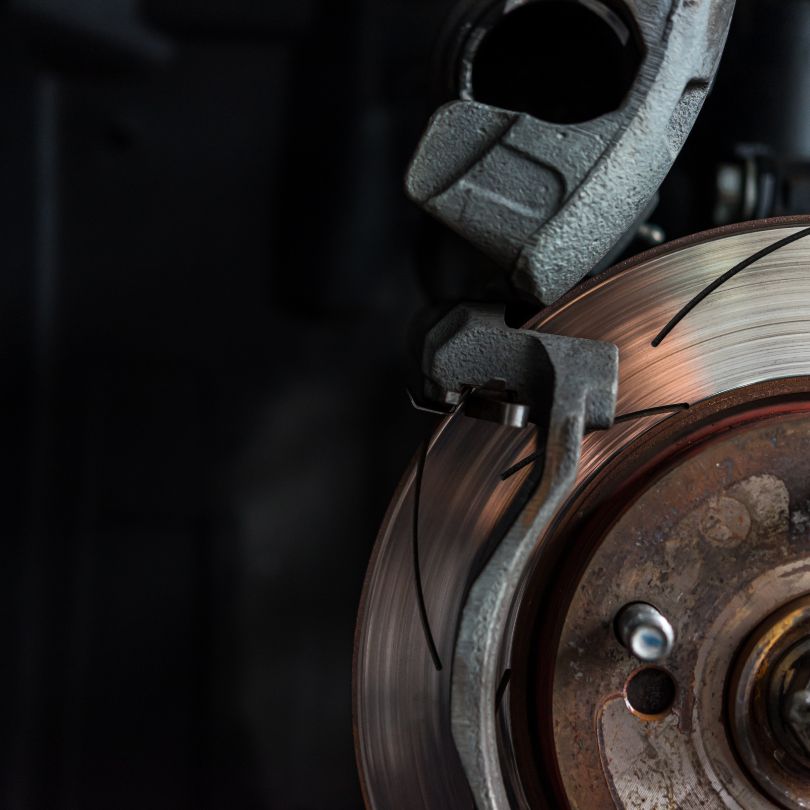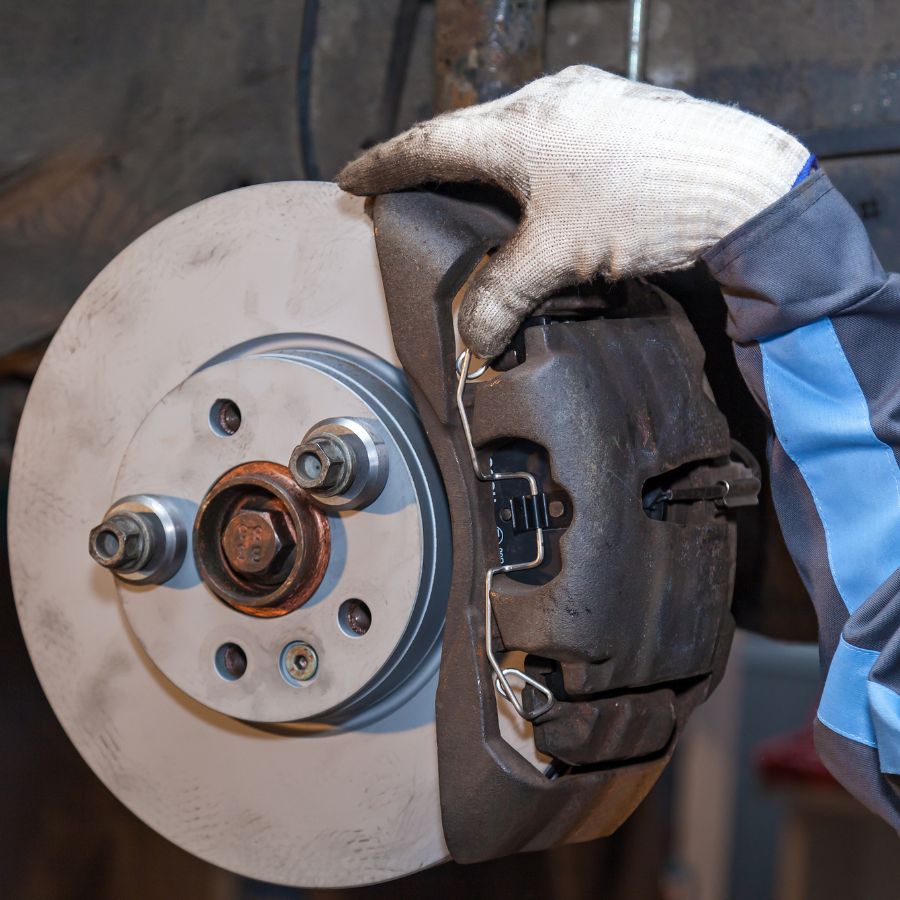How to Choose the Right Brake Pads

How do Brake Pads Work on a Car?
Brake pads are the most commonly replaced braking component in automotive brake systems. They are located in the braking calipers and are pushed against the brake rotors when the brake pedal is depressed in order to stop the vehicle.
Brake pads consist of a metal backing plate bonded to a friction material. When the brakes are applied, the friction material clamps down onto the spinning brake rotor, creating friction that slows the rotation of the wheels. The friction between the pads and rotor converts the kinetic energy of the moving vehicle into heat energy, slowing the vehicle down.
Over time, the constant friction wears away the brake pad friction material. The pads slowly wear down through normal braking until eventually the friction material reaches a minimum thickness and needs to be replaced. As the pads wear down, they also produce brake dust from the friction material rubbing off. This brake dust accumulates on the wheels and brake components. Replacing worn brake pads is the most common brake system maintenance.
What Are Brake Pads Made Of?
Brake pads consist of multiple components bonded together in layers:
Backing Plate
This forms the foundation of the brake pad. It is made of firm steel that provides structural integrity to the pad.
Shims
Thin metal shims are attached to the backing plate on some designs. The shims help dampen brake noise and vibrations.
Friction Material
The friction material makes up the outer layer that contacts the rotor. It is bonded to the backing plate. There are different friction composite formulations optimised for particular vehicle applications. Most contain various ratios of abrasive material, bonding agents, fillers, and reinforcements. Common ingredients include forms of glass, graphite, brass, copper, rubber, and ceramic particles bonded together by phenolic resins. Friction material formulas are engineered to meet targets for wear rates, noise, dust levels, and friction coefficients.

Which Type of Brake Pad is Best?
This depends on your vehicle application and how you intend to drive the vehicle. Brake pads can be broadly split in to three categories:
- Original Equipment (OE)
- Replacement,
- Heavy Duty (inc. Commercial & 4x4) and Performance
OE REPLACEMENT BRAKE PADS
- Designed to be a like for like replacement for the original brake pads fitted to the vehicle
- This is a great place to start if you are looking to maintain the high levels of safety originally designed by the manufacturer
- These pads offer the best compromise between stopping distance, noise, brake dust and fade resistance
HEAVY DUTY, 4X4 & COMMERCIAL BRAKE PADS
- Designed as an upgrade to the OE pads
- If you regularly tow or carry heavy loads, do high mileage or just want a pad to take any punishment you can dish out, these are the pads to choose
- Typically, HD pads will be able to operate at elevated brake temperatures without fading, ideal for long hill decants with a caravan on the back of your vehicle
PERFORMANCE BRAKE PADS
- Specialist brake pads primarily designed for intense braking on the street or track
- Made from high friction materials they offer exceptional stopping performance without the brake fade associated with OE Pads
- Performance pads usually generate more brake dust and noise than other types of pads
Ceramic vs Semi-Metallic Brake Pads
Ceramic and semi-metallic pads are two major types of friction materials used in brake pads. They have different properties when it comes to noise, dust, and stopping power.
Ceramic Brake Pads
- Made from non-metallic, ceramic-based compounds
- Tend to produce less brake dust than metallic pads
- Provide smooth and quiet braking performance
- Generate less heat buildup in extreme braking
- More expensive than semi-metallic pads
Semi-Metallic Brake Pads
- Contain 20-65% metal content from copper fibers, steel wool, etc.
- Can withstand very high temps but heat up quickly
- Bite more aggressively and offer high friction
- Tend to produce more brake dust and noise
- Less expensive than ceramic brake pads
Brake Pad Diagnostics

Issues like uneven brake pad wear or excessive brake noise can arise over time. Some diagnostic steps when dealing with brake pad problems:
Inspect the Pads
Remove wheels and visually inspect pad thickness on inner and outer brake pads. Measure thickness and compare to manufacturer specs to check for uneven wear. Uneven wear usually means caliper pins are sticking or slide bushings are worn.
Check Pad Alignment
Inspect that leading and trailing brake pads are still aligned parallel to the rotor. Misalignments cause uneven contact. Inspect caliper slides for tight spots and ensure pads move freely.
Look for Damage
Check brake pad surfaces for any cracks, flaking, or gouges in friction material. Damage like that can cause noise. Feel friction surface for any unevenness.
Measure Rotors
Use micrometer to measure brake rotor thickness variation and lateral runout. Too much variance indicates a warped rotor that needs resurfacing or replacement. This can drive brake noise or uneven wear issues.
Test Braking System Parts
Manually check that caliper pins can slide smoothly with lubricant. Verify slider bushings/abutment clips are not overly worn. This allows pads to fully retract after braking.
Doing thorough diagnostics checks for damage, uneven wear measurements, play in braking hardware, and rotor runout variances. This can isolate the root cause of common brake pad issues.
What Brands of Brake Pads Can I Choose From?
- BENDIX Australia’s leading brake pad, Bendix have made the original equipment brake pads for Australia’s leading manufactures including, Holden, Ford and Toyota for decades. Their large range of pads have been specifically designed for Australian conditions.
- BREMBO: The most iconic name in brakes globally, Brembo engineer brakes for the worlds fastest cars including Ferrari, Porsche and Lamborghini. Their range of pads are direct replacements for high performance vehicles with Brembo callipers fitted as standard or as an upgrade for all other applications
- TRW: A leading manufacturer of brake pads for European vehicles, TRW pads are engineered to be a like for like for the OE pads. A great choice for anyone looking to maintain the original braking performance of the European vehicle.
- BOSCH: From the creator of ABS braking systems, Bosch brake pads are an OE quality pad with matched friction and performance properties to the original pads fitted to your vehicle.
- PROJECT MU: The ultimate in Japanese brake pad technology, Project Mu offer extreme performance braking for high performance vehicles and V8 Supercar race teams alike. Ideally suited to track or race applications.
- FERODO DS: The benchmark high performance brake pad for European vehicles, DS pads are a great upgrade for any track day enthusiast.
Comments
No posts found










